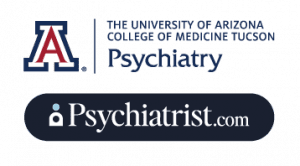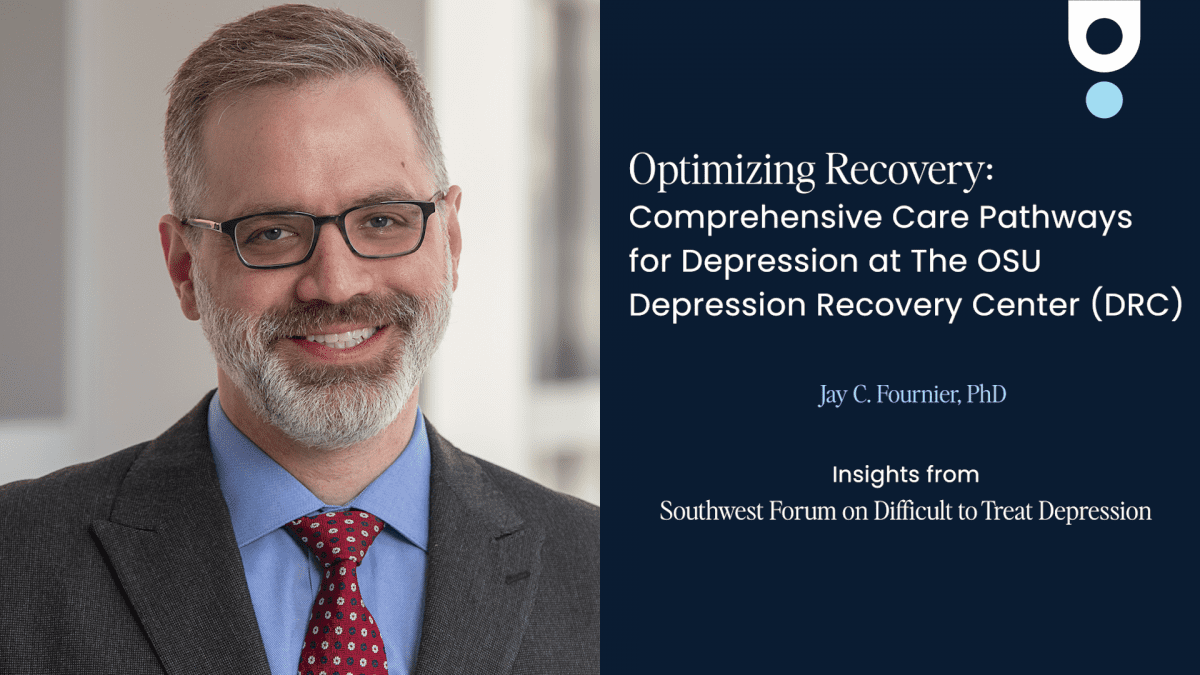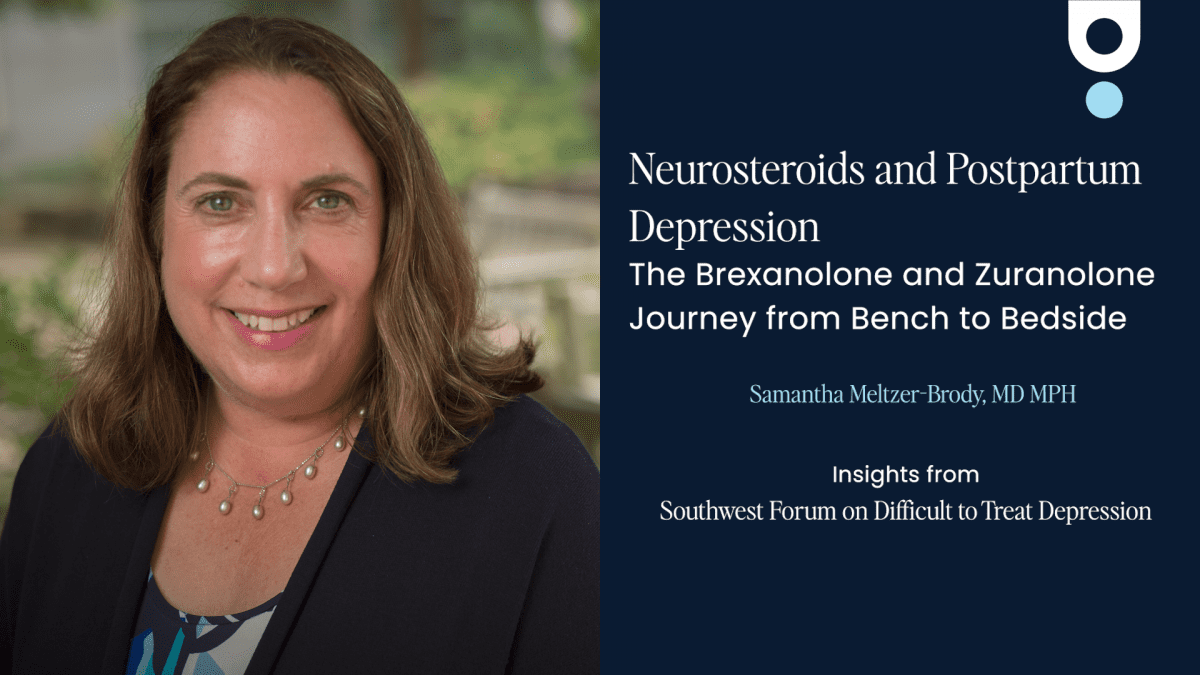Patricio Riva Posse, MD, associate professor in the Department of Psychiatry and Behavioral Sciences at Emory University, is a neurologist and psychiatrist. His work spans two disciplines, focusing on invasive and non-invasive neuromodulation approaches. He also explores novel pharmacological strategies for treatment-resistant mood disorders, with an emphasis on neuroimaging and physiological biomarkers.
In his talk, Posse shares his thoughts on vagus nerve and deep brain stimulation, and the promise it presents to patients battling difficult-to-treat depression. It’s a dramatic shift compared to the current treatment approach, but it’s one that Posse insists can help those caught in the endless cycle of recovery and remission.
Patricio Riva Posse, MD
Associate Professor
Department of Psychiatry and Behavioral Sciences
Emory University
| This presentation was part of the “Southwest Forum on Difficult to Treat Depression: Focus on Approach, Algorithms, and Access” in July at the Arizona Biltmore in Phoenix. Psychiatrist.com worked with the University of Arizona College of Medicine – Tucson Department of Psychiatry.
To learn more and watch more videos, visit our Difficult to Treat Depression Clinical Resource Center. |
  |
|---|
Transcript
[00:06 – 01:19] Introduction to Surgical and Recurrent Depression Interventions
Today, I will be presenting on the topic of surgical interventions in treatment-resistant depression, more specifically vagus nerve stimulation and deep brain stimulation. In the course of a depressive episode, usually the natural progression to a disorder and the resolution of it has the original intention of reaching patients remission of symptoms and functional recovery. And that is something that happens usually in single episode or in recurrent episodes up to two-thirds of the case.
But unfortunately, as we’re familiar with the recurrent nature of the major depressive disorder, patients tend to have relapses. And every time that they have a relapse, the possibility of achieving remission becomes more difficult. And not only that, but the response, which is not necessarily a full symptomatic remission or even a full functional recovery, leads to a higher likelihood of further episodes.
[01:20 – 02:52] Challenges with Treatment-Resistant Depression and Relapse Rates
And in the end, what we end up seeing is that patients that have recurrent episodes reach a point in some of these instances in which they have this treatment-resistant depression state, in which despite multiple trials of medications that has been defined differently, but usually between at least two, but definitely more than four different treatment interventions is what we call this treatment-resistant depression subtype. Despite of the efficacy of our interventions in the acute setting, the brain of these patients tends to, by default, go into a depressed state. And unfortunately, these patients have, despite the intervention that one might choose, at least, you know, if they fail two trials, up to 65% of relapse within 3.1 months.
And if they have three failed trials in the current episode, the likelihood of them relapsing is 71% within 3.3 months. As we know, achieving remission gradually, you know, after failed trials, increases with time, and then patients relapse quite rapidly. You see here in this slide how up to two-thirds of these patients, as I was mentioning, have a high relapse rate within a year.
[02:53 – 04:20] Alternative Treatments and Long-Term Stability Considerations
Even if we achieved remission successfully in the third or fourth line of treatment, these patients will have relapsed. So the subsequent lines of therapy include electroconvulsive therapy, repetitive transcranial magnetic stimulation, but these treatments are all in the acute setting, right? We can send our patients to get pharmacological recommendations, psychotherapeutic interventions that are very important, newly, and this is very exciting, psychedelic assisted psychotherapy, and then, as I was saying, TMS, electroconvulsive therapy, ketamine or esketamine treatments, and surgical neuromodulation at last. And why do I insist on the surgical neuromodulation? All of the other treatments, with the exception of surgical modulation, treat the acute phase of these major depressive disorders.
The relapse rate does not change whether it’s electroconvulsive therapy, whether it’s adequate and effective psychopharmacology or ketamine or esketamine. These patients will need maintenance on ketamine and esketamine. The data on long-term use of ketamine and esketamine is scarce. And in TMS, we know that patients relapse. We have some preliminary promising data saying that patients can recapture a relapse. But the idea in this case is that patients will continue to need treatment.
[04:21 – 06:12] Vagus Nerve and Deep Brain Stimulation: Data and Insights
What we see with surgical interventions, for example, vagus nerve stimulation that involves the implantation of a pulse generator in the chest that is attached with a cable to the left vagus nerve, is that patients not only have twice as likely the chance of achieving response, but that they stay well. The goal in the treatment of chronic depression maintenance is not only to provide acute symptomatic relief, but to provide stability in the response. What our patients in our clinic usually report is that even if they feel symptomatically well with whichever intervention we might take at the moment, the fear of patients with chronic depression is, when will they be depressed again? As the data shows in this graph, it’s very important that when patients achieve a response with VNS, they tend to stay well.
So even if the response might not be full remission, but a response state, these patients have the possibility of staying well and making treatment decisions, making life decisions that will considerably improve their quality of life. We saw that with vagus nerve stimulation. And we see this now with subcolossal cingulate deep brain stimulation.
This is unpublished data yet, but, you know, we’re preparing for publication in which we pooled 172 patients that had received deep brain stimulation across different sites and different trials with DBS in the subcolossal cingulate. And what is interesting, as you see here, these patients are among the most severe cases of treatment-resistant depression. You see that up to 88% of patients had received prior electroconvulsive therapy.
[06:13 – 08:12] Results and Sustained Responses with Surgical Interventions
Of course, all patients had received psychotherapy in the past. Highly recurrent episodes, you know, this was the fifth episode on average in which patients were depressed. And what we see is that they had been, you know, in the current episode for at least eight years.
So these patients with highly recalcitrant treatment-resistant illness with deep brain stimulation, and this is 172 patients, we can see that about a year, 12 months into the study, we have a little bit over 50% response rate, like 50% reduction in symptoms, and about a 30% remission rate, which is, you know, very, very promising. But again, we think about the invasiveness of surgical interventions and the cost and the potential risks, we need to maintain the stability of this response for a long time. And this is what we’re showing not only in vagus nerve stimulation in that paper by Aronson published in 2017, but this can also replicate in deep brain stimulation, which we see a sustained response of about 70% between year and a half up to four years of treatment.
And here we see with MADRS response and remission also achieving about 50% to 60% response rate over time. And this is, to me, what makes the biggest sense about the possibility of having surgical treatment options for our patients with treatment-resistant depression, and it’s something that no other advanced pharmacological treatment option or non-invasive neuromodulation treatment can provide to our patients so far. Despite recent advances in pharmacology and non-invasive neuromodulation, we know that the rates of relapse in patients with TRD remain unacceptably high.
[08:13 – 09:53] Importance of Surgical Options in Psychiatric Care
And treatments that can provide a sustained response by delivering continuous stimulation after the surgical intervention can provide real treatment options for this vulnerable population. The key takeaways that I would like to transmit to my fellow clinicians is that patients that have recurrent treatment-resistant episodes of depression have to consider the possibility of embarking in a surgical solution for their symptoms. This is a shift in the paradigm of classic psychopharmacology, but one that I’m sure will provide sustained benefit for this increasing population in our clinics.
I like to think of surgical neuromodulation treatments the same way that cardiologists might think of cardiac catheterization. Not every psychiatrist needs to know exactly how to do electroconvulsive therapy, TMS, or how to program a VNS, which, by the way, is very simple. But to keep it in mind the same way that as a cardiologist now continues to heal, now has as part of their standard of care, the decision of sending their patients to be evaluated for a cardiac catheterization and possibly, you know, implementation of STENT when symptoms are not getting better.
[09:54 – 10:49] Future Directions and Clinical Trials for Depression Treatments
This paradigm shift that I’d like to propose in psychiatry would involve evaluation by psychiatrists that are interventional psychiatrists to decide whether the patients with treatment-resistant depression are adequate for these interventions. There are clinical trials going on right now, both for vagus nerve stimulation in depression and bipolar depression, and there’s about to be one launched for deep brain stimulation in depression in the next couple of months. So to keep that in mind as a clinician, that your patients are not necessarily destined to have indefinite treatments with different pharmacological options, but that surgical options remain a real possibility.


